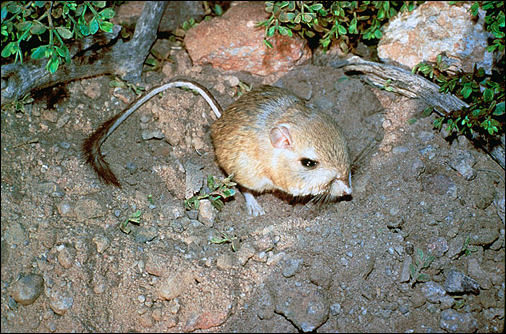

Some antievolutionists are fond of claiming that scientists think that all of the marvels of the biological world are a result of random chance. In actuality, scientists point out that the interplay between an organism's genetic makeup and the environment in which the organism lives results in a far from random process—that those variants best able to survive in the environment are the ones who contribute the most genetic material to the next generation, resulting in better adaptation of the population through time.
Going along with this, it makes sense that similar environments in
different places may select for many of the same characteristics even when the
organisms are not closely related. We have a good example in our desert's kangaroo
rats and the jerboas of the Old World. Despite not even being in the same rodent
family, the enlarged hind legs and diminished front legs, the greatly enlarged bony
capsules surrounding the middle ear, and even the color pattern can be similar. Such
examples of convergent evolution are not rare—the selective environment is king!

Listen to the Audio (mp3 format) as recorded by KTEP, Public Radio for the Southwest.
Contributor: Arthur H. Harris, Laboratory for Environmental Biology, Centennial Museum, University of Texas at El Paso.
Desert Diary is a joint production of the Centennial Museum and KTEP National Public Radio at the University of Texas at El Paso.

A kangaroo rat. Image by George Harrison, courtesy of the U.S. Fish and Wildlife Service.